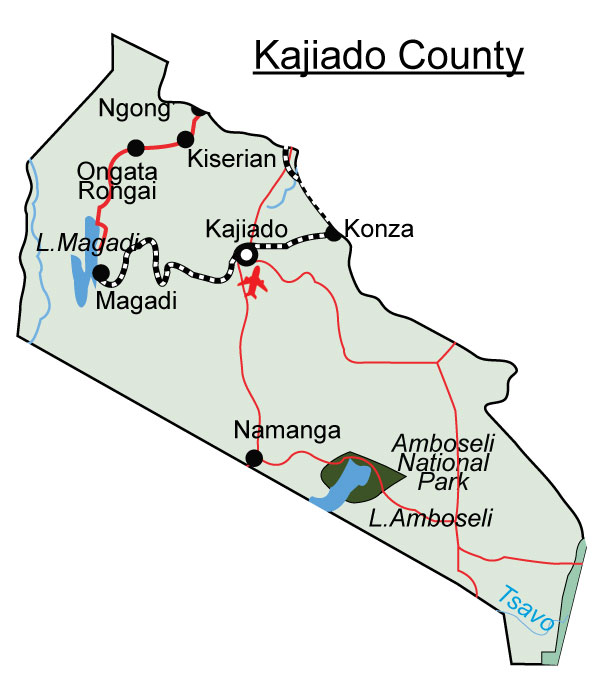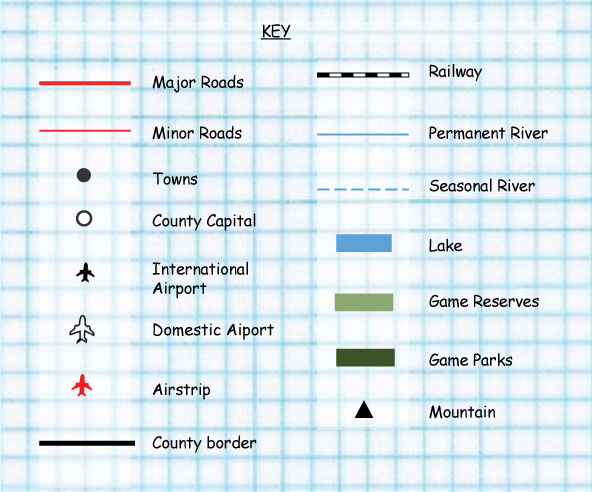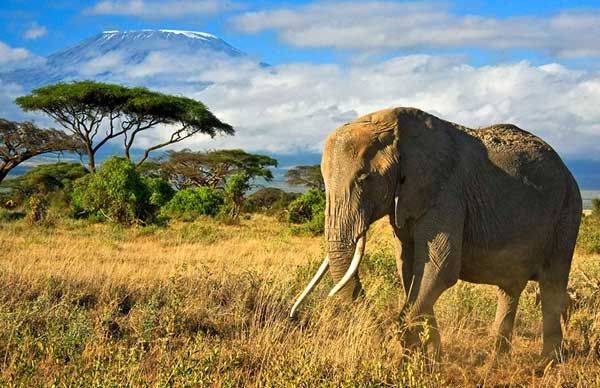Kajiado County
Introduction
- It is in the former Rift Valley Province of Kenya. It has a population of 687,312 and an area of 21,292.7 km². It borders Nairobi and extends to the Tanzania border further south. The capital is Kajiado but the largest town is Ngong.
Constituencies
- Kajiado Central Constituency
- Kajiado North Constituency
- Kajiado South Constituency
- Kajiado East Constituency
- Kajiado West Constituency
Physical features
Rivers
- Kandisi river
- Mbagathi river
- Kajiado River
Hills
Plains
- Tinga plains
- Kajiado plains
- Enkasiti plains
Valleys
Importance of physical features
- Tourist attraction
- Source of revenue
Types of natural vegetation
Importance of vegetation
- Tourist attraction
- Contribute to the climate of the area
Map of distribution of physical features


People and population
Language groups
- Isiolo is home to the Niger–Congo and Nilo-Saharan-speaking Ameru, Samburu and Turkana, as well as the Cushitic-speaking Rendille, Somali and Boran people.
Areas of high population density
- Ngong and Kajiado towns are the most populated areas in the region.
Areas of low population density
- Kajiado north is the least populated area
Social relations and cultural activities
Traditional way of life of the people
Food
- They depended on milk, blood and meat from their livestock since they were nomads. They also ate fruits gathered by women. From the surrounding bushes.
Dressing
- Clothing varies by age and location. Young men, for instance, wear black for several months following their circumcision. However, red is a favored colour. Blue, black, striped, and checkered cloth are also worn, as are multicolored African designs. The Maasai began to replace animal-skin, calf hides and sheep skin, with commercial cotton cloth
Songs and dances
- The music is made by the voices of everyone in the community working together. Maasai songs are usually made up of two different rhythms that seem like they do not go together. The leader of the song might call something out, and the community would repeat it back.
Traditional medical practices
- Women gathered plants used for medical purposes as they were gathering fruits in the bushes. Different plants were used to treat different illnesses.
Ceremonies
The Maasai cultures rites revolves around the initiation ceremony of both boys and girls. The initiation ceremony begins when boys and girls are at the age of 15-18 years of age. The initiation ceremony involves three main events in the life of an individual.
- Confirmation of the person name.
- Circumcision
- Graduation into adulthood
Each of the three stages involves a lot of traditional ceremony according to one’s clans.
Festivals
To mark this important season, the maasai celebrated this occasion with their distinct song and dance. The ceremony was done at night young women and men involved in the different dances while the old men and women sat to be entertained. The old men were responsible for conducting rituals to bless the harvest. The ceremony was a nice of thanks giving to their God.
Maasai music traditionally consists of rhythms provided by a chorus of vocalists singing harmonies while a song leader, or olaranyani, sings the melody.
Resources and economic activities
Agriculture
Cash crops and food crops grown
- Maize
- Cassava
- Onions
- Tomatoes
- Vegetables
Areas where the cash crops are grown
Types of livestock
Fishing
Areas where fishing is practiced
Forestry
Major of forests
Wildlife and Tourism
Types of wildlife
- Antelopes
- Hyenas
- Lions
- Gazelles
- buffalos
Game parks and reserves

Major tourist attractions
- Wildlife
- The great rift valley
Industries
Traditional industries
Products of traditional industries
- Tourism
- Mining
- Livestock keeping
Trade
Major trading centres
- Isinya town
- Ngong town
- Kajiado town


